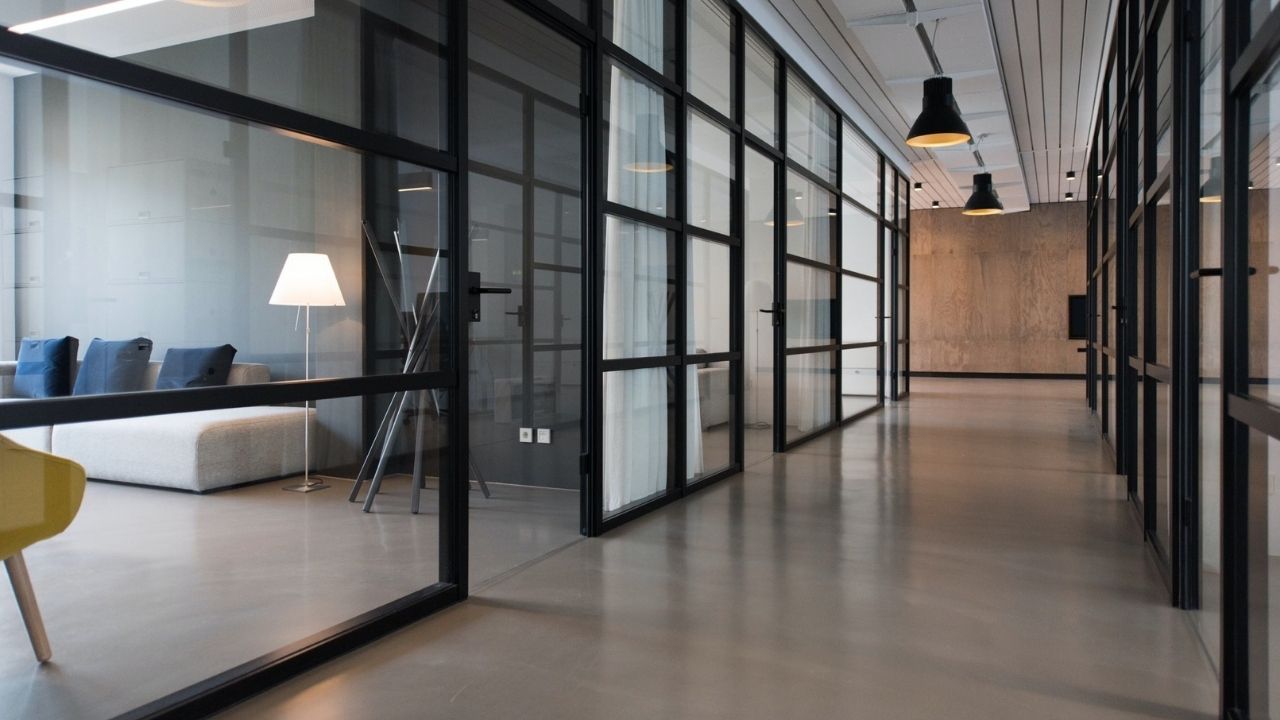- Workthere’s Flexmark report found that there is an overwhelming bias for private offices when it comes to space allocation within flexible offices.
- Communal spaces represented the second highest space allocation within flexible offices globally.
- The report also found an increase in the allocation of outdoor space from 2% last year to 7% this year, emphasising the growing focus on wellbeing.
According to Workthere’s Flexmark report, there is an overwhelming bias for private offices when it comes to space allocation within flexible offices on a global scale with this type of space accounting for 50% overall. The flexible office specialist notes that this is supported by the fact that private desks are also the most profitable with the majority of revenue (54%) coming from private office membership fees over the last 12 months, despite the fact that private office occupancy has fallen from 81% to 68% over the same time frame. The Flexmark report also shows that communal spaces represented the second highest space allocation within flexible offices globally at 19%, followed by dedicated desks (13%), hot desks (11%) and outside areas (7%).

Cal Lee, global head of Workthere, comments: “The fact that there is a clear majority of space allocation for private offices within flexible space goes a long way to dispel the misconceptions that this market is predominately bias towards coworking and hot desking. It is also interesting to note the
increase in the allocation of outdoor space from 2% last year to 7% this year, emphasising the growing focus on wellbeing.
“The difference in space allocation of communal space by country paints a more varied picture with the UK dedicating the lowest proportion to this type of space at 13%. Given the focus that the UK real estate sector has placed on collaborative environments following the pandemic, we would undoubtedly expect this number to increase and future spaces to be designed with this in mind.”
Workthere’s research shows that for large communal areas and more outdoor space, Asia ranks top however, this comes at the expense of more densely populated office space. For more of a balance, the US offers a strong option ranking second for communal space and outdoor space.

The last 12 months has seen the average space taken by flexible office providers increase marginally from 22,280 sq ft to 24,688 sq ft, with 30% of global space taken being between 16,152 sq ft and 26,915 sq ft. When breaking this down globally, Workthere’s research found that the majority of providers occupying space of this size are located in Europe and Asia, accounting for 29% and 33% respectively. By comparison 33% of UK providers occupy space smaller than 5,387 sq ft.

Cal continues: “Given that the majority of flexible office space in the UK is concentrated in cities where it is prohibitively expensive to secure larger spaces, it is not surprising that the space taken by providers is smaller when compared on a global scale. The average size of space taken by flexible providers was steadily increasing prior to Covid however, the pandemic has driven many operators to seek smaller spaces in more suburban or repurposed locations. As such we expect the range in size offer to continue to grow, but the average size is likely to remain stable.”


 Dr. Gleb Tsipursky – The Office Whisperer
Dr. Gleb Tsipursky – The Office Whisperer Nirit Cohen – WorkFutures
Nirit Cohen – WorkFutures Angela Howard – Culture Expert
Angela Howard – Culture Expert Drew Jones – Design & Innovation
Drew Jones – Design & Innovation Jonathan Price – CRE & Flex Expert
Jonathan Price – CRE & Flex Expert











